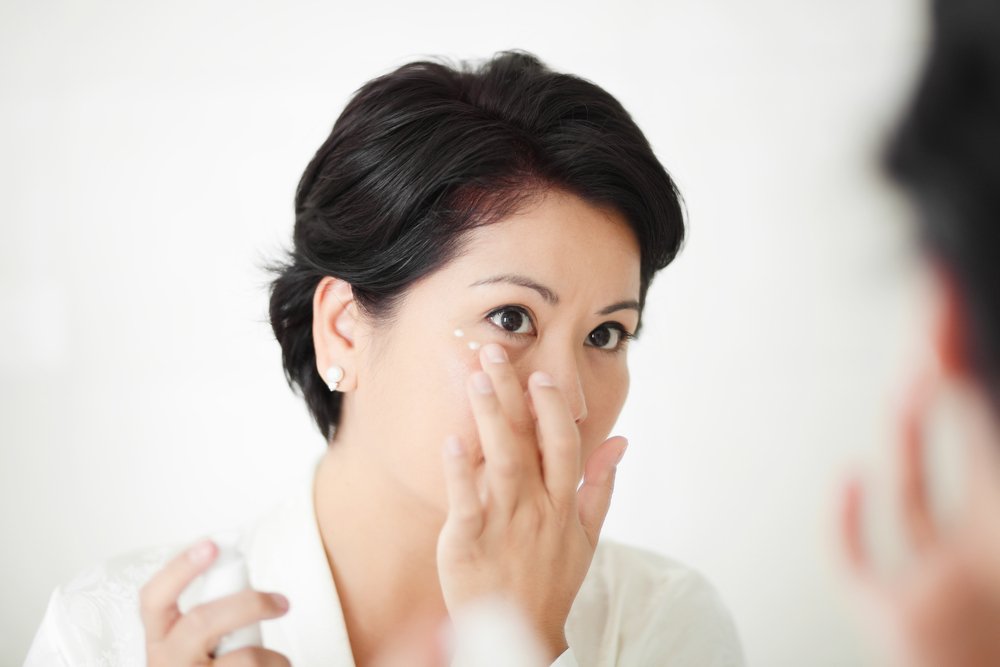Take a moment, right now, to run your fingers across your face—a soft stroke down the side of your cheek or a gentle swipe across the forehead. How did it feel? Soft and smooth? Or dry and course? During the winter months, especially in dry climates like Colorado, it’s, unfortunately, more likely to be the latter. Yet dry face skin can affect us all—even those who live in warmer, more humid climates.
Of course, low moisture in the air is just one culprit; all sorts of things can make our skin—especially on the face—dry and flaky. Hot and cold weather, changes in temperature, exposure to hot water, harsh and drying soaps and detergents, too much direct sunlight or heat, and lack of hydration can all lead to dry face skin.
BREAKING: Doctors Can't Believe She Used This To Erase Her Wrinkles...
It isn’t usually serious (though there are conditions like dermatitis and psoriasis that may require a visit to your dermatologist), but dry face skin can be uncomfortable, prevent you from looking your absolute best, and even make you look much older than you really are. (No matter how pro-aging you are, you still don’t want someone telling you that you look 10 years older than your age, right?)
Symptoms Caused by Dry Face Skin
An oil called sebum is vital to healthy skin. Too much leads to pimples, while not enough—because the body doesn’t create enough—leads to dry face skin. As with so much of our health, it’s all about balance.
If your skin is dry, you are likely experiencing:
- Skin tightness, which can be made worse by showering, bathing, and swimming
- Rough, bumpy-looking (and feeling) skin
- Itchy, red, and uncomfortable skin
- Flaking, peeling, or scaling (there’s a reason it’s called “alligator skin”)
- Fine lines and wrinkles
- Looking gray or ashy (especially if you have a darker complexion)
And if you’re over 40, you’re even more likely to have dry face skin, as more than 50% of mature adults experience dry skin.
What Can You Do to Relieve (or Prevent) Dry Face Skin?
Enough of the symptoms and causes. If your face is dry, you want to know what to do now to infuse it with moisture, right? After all, you aren’t getting any younger! Fortunately, here are 8 simple steps you can take to help your dry face skin feel softer and smoother.
1) While a hot shower or bath can feel amazing—especially when it’s cold outside—to help keep your skin from becoming too dry, limit your shower (or bath) time to no more than 5 to 10 minutes and no more than once per day. And turn that dial down. Keep the water warm (or even cold) rather than hot. And that goes for washing your face too as the hot water washes away your natural oils faster! After you wash, just pat your skin but not completely dry. Allow the moisture to soak into your dry skin.
2) Is it windy and cold outside? If so, make sure you cover up. Wear a hat and soft scarf around your face—avoiding scratchy or rough fabrics—to help protect against dry face skin. (And wear gloves to protect the delicate skin on your hands.)
3) Protect your skin from harsh chemicals by choosing gentle cleansers, especially for your face. Avoid those that contain sodium lauryl sulfate or sodium laureth sulfate (SLS); petroleum- or mineral oil-derived ingredients (including parabens); foaming agents like DEA, MEA, and TEA; synthetic fragrances and colors; phthalates; formaldehyde; BHT; dioxane; and alcohols. This goes for cosmetics too!
And even if you are using a gentle cleanser, refrain from washing your face more than twice a day.
4) Your skin was designed to naturally create new cells and sluff off the old ones. Unfortunately, those old cells can sometimes stick to the surface, clogging pores and leaving dry spots. So, sometimes it helps to remove the excess dead skin with brushes, exfoliating washcloths, or scrubs made to remove the dead cells. You can also choose to use a chemical exfoliator that includes alpha-hydroxy acids or beta-hydroxy acids. Just don’t exfoliate too often as this can damage skin, leading to dryer, rougher skin.
5) Hydrate from within. Drink plenty of water and other hydrating fluids (such as caffeine-free tea) throughout the day.
6) Especially if you live in a dry climate, invest in a humidifier to help increase the level of moisture in your home. Place it in the room(s) you use the most and make sure you keep it clean to avoid bacteria and mold buildup.
7) Beauty sleep is real! Sleep is the time when your body repairs itself, including your skin. During sleep, blood flow to the epidermis increases, and skin rebuilds collagen and repairs damage. Sleep is a natural moisturizer, as it’s the time when your body’s hydration rebalances, and it’s also a time when the skin’s pH balances—both important to helping the skin produce the moisture it desperately needs. Make sure you’re getting 7 – 8 quality hours of sleep each night.
TRENDING: Men Try This Tonight - You'll Never Need The Pill Again
8) Use a good quality moisturizer twice a day (every morning and before bed). Look for one that contains moisturizing ingredients, such as vitamin C, sodium hyaluronate, and squalene, without harsh, damaging chemicals like parabens, phthalates, and sulfates. And remember to reapply moisturizer anytime your skin has been submerged in water—for example, after you’ve gone swimming.
Get Rid of Dry Skin Naturally: A Recap
By following these simple tips, you will likely notice your dry face skin starts to feel better and more hydrated within just a week or two. Then, all you’ll need to do is keep up these skincare tips to help prevent dry face skin in the future.









